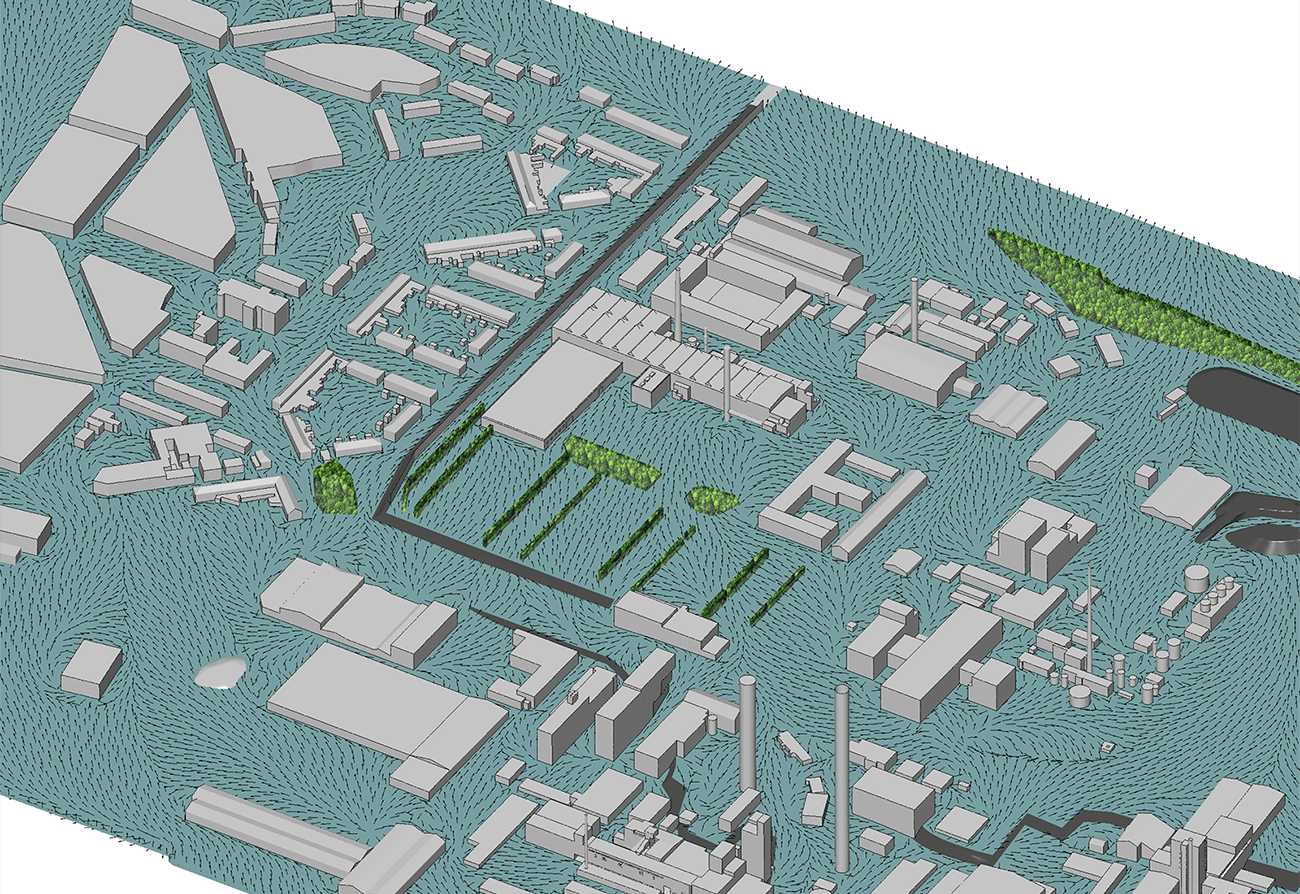Deploying cutting-edge technology to reduce metal-to-air emissions is paying off
As part of our commitment to reduce diffuse emissions at our operational sites, Umicore is using sophisticated R&D modelling and innovative techniques to better identify the sources of metal to air emissions and enable teams to take action. To show this work in action, we focus on our precious metals refining operations in Hoboken, Belgium.
Central to Umicore’s role as a Sustainability Champion is our development of innovative solutions that speed up the transition to a climate-positive future. Equally important, however, are the actions we take to monitor and follow up on the environmental impact of our operations, particularly in protecting land, water and air.
Umicore has made significant gains in these areas. From 2015 to 2020, we reduced metal emissions to air by 67%, metal emissions to water by 59% and NOx emissions by 47%. The improvements in metal emissions can be largely attributed to large investment projects at our precious metals refinery in Hoboken. Further steps are being taken to reduce metal to air emissions and, alongside Umicore’s own ambitions, there are regulatory targets to reduce the concentration of fine dust and coarse dust.
Building on these successes and supported by our eco-efficiency performance and state-of-the-art operations, Umicore set a group target in 2021 to reduce diffuse emissions by 25% by 2025. Diffuse emissions are emissions from scattered sources, such as dust moving when handling raw materials or escaping from production halls.
Data collection and analysis
To date, Umicore has been successful in targeting sources of emissions that can be readily contained. For example, at the lead refinery at Hoboken, we sealed the building and installed an extensive gas extraction and cleaning unit to prevent dust escaping and to minimise the impact on the environment. The next phase is targeting smaller, less obvious sources.
To this end, we have invested in monitoring our processes and measuring different parameters. This includes the use of online X-ray metal monitors which collect dust particles on X-Ray Fluorescence (XRF) tape at different areas of the site. Compared to other devices that use daily averages, these instruments allow for averages to be taken every hour, helping to identify the emissions source more accurately. Other factors, such as windspeed and direction, alongside other operational data, are also measured on site, providing a full data composition.
To improve our analysis of this large volume of data, Umicore’s Corporate R&D (CRD) is strengthening our capability with a high level of automation. This allows us to identify smaller sources of metal emissions and to reduce our impact further while existing improvement projects are ongoing.
Based on our data-driven approach, we identified high windspeeds as a risk-factor in emissions. Since 2021, we’ve improved our response to more extreme weather conditions by adapting our way of working during high windspeeds. This includes additional wetting of the raw materials to prevent dust being carried by the wind, or stopping specific activities entirely if wind conditions are too severe.
Predicting behaviour with digital models

As well as improved data collection and analysis, we are also using predictive modelling and artificial intelligence.
Computational Fluid Dynamics (CFD) allows us to create predictive models that act as ‘digital twins’ of the Hoboken site, simulating the behavior of sources, emission concentrations and wind directions. These models provide additional insights to the data from the monitoring stations. Combined, they help us identify sources of emissions which then allows us to define and prioritize necessary improvements. This type of modelling also provides added reassurance that our projects to control metal to air emissions are effective. This was the case for the construction of wind screens last year for the smelter stockpiles at Hoboken: the site’s digital twin simulated the impact of the windscreens on emissions to show that introducing them would be beneficial.
Additionally, Umicore is developing artificial intelligence algorithms to model emission behavior by combining emission, weather and production data. This way, based on the conditions and circumstances, we will be able to more quickly and accurately adjust our operations if needed. This data collection is strengthened by our collaborative, multi-disciplinary approach involving teams from our precious metals refining site such as logistics and operations, and external partners such as the Flemish Institute for Technological Research (MooV) and Royal HaskoningDHV. And by growing more awareness around diffuse emissions within the company, we can expect to see greater buy-in from teams to make a difference in their respective fields.
Each initiative has had a similar effect, in raising awareness among colleagues and encouraging collaboration. In fact, the wide range of approaches and technological innovations introduced at Hoboken have already helped Umicore reach and surpass our 2025 target of 25% less diffuse emissions. By 2022, we achieved a 45% reduction from the Group's 2020 baseline, largely due to operational excellence and state-of-the-art facilities in Hoboken. Achieving this internal target is significant and part of our longer-term goal. Scaling up best practices introduced at Hoboken will be key to these efforts, as new initiatives for monitoring, predicting and acting on metal to air emissions become standard within Umicore, and strengthen in years to come.



